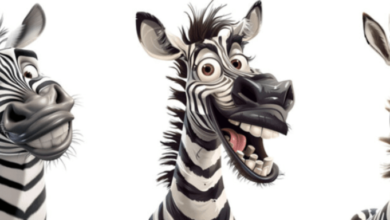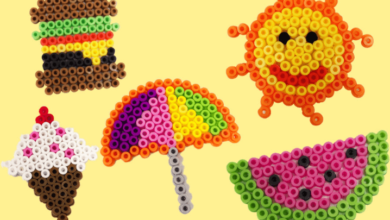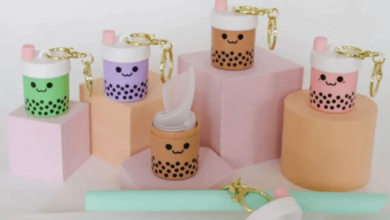How to Choose the Right Graphic Designer
Choosing the right graphic designer can make or break your project. Whether you’re launching a new brand, designing a website, or creating marketing materials, the visual impact is crucial. With countless graphic designers available, each with their own style and expertise, finding the perfect match for your needs can be daunting. This guide will walk you through the essential steps and considerations to help you choose the right graphic designer for your project.
Understanding Your Project Needs
Before you start searching for a graphic designer, it’s essential to have a clear understanding of your project needs. Knowing exactly what you want will help you find a designer whose skills and experience align with your goals.
Define Your Goals and Objectives
Begin by outlining the goals and objectives of your project. Are you looking to create a logo, design a website, or develop a full brand identity? Defining your goals will help you communicate your vision to potential designers and ensure they understand your expectations.
Determine Your Budget and Timeline
Budget and timeline are critical factors in the design process. Establishing a clear budget will help you narrow down your options and prevent misunderstandings later on. Similarly, having a realistic timeline in mind will ensure that the project stays on track and meets your deadlines.
Researching Potential Graphic Designers
Once you have a clear understanding of your project needs, the next step is to start researching potential graphic designers. This process involves looking at portfolios, reading reviews, and evaluating different designers’ skills and styles.
Reviewing Portfolios
A designer’s portfolio is their visual resume. It showcases their past work and gives you an idea of their style, creativity, and technical skills. When reviewing portfolios, look for work that aligns with your project needs. Pay attention to the diversity of their work, the quality of design, and whether they have experience in your industry.
Checking References and Testimonials
Testimonials and references provide insight into a designer’s work ethic, reliability, and client satisfaction. Reach out to past clients to ask about their experience working with the designer. This will help you gauge whether the designer is easy to work with, meets deadlines, and delivers quality work.
Evaluating Technical Skills
Graphic design is not just about creativity; it also requires technical proficiency. Make sure the designer is skilled in the software and tools needed for your project, whether it’s Adobe Creative Suite, web design platforms, or animation tools. Their technical skills should match the demands of your project.
Assessing Compatibility and Communication
Choosing the right graphic designer goes beyond their portfolio and skills. It’s essential to find someone who is compatible with your working style and communicates effectively.
Assessing Compatibility
Compatibility between you and your designer is crucial for a smooth collaboration. During initial meetings, assess whether you share a similar vision and approach to the project. Consider their personality and how well they listen to and understand your ideas. A good designer should be able to take your input and enhance it with their expertise.
Importance of Communication
Clear and consistent communication is key to a successful project. Ensure the designer is responsive, understands your feedback, and is open to discussing ideas and revisions. Miscommunication can lead to delays, misunderstandings, and a final product that doesn’t meet your expectations.
Considering Design Style and Aesthetic
Each graphic designer has a unique style and aesthetic. It’s important to choose a designer whose style aligns with your brand’s identity and the message you want to convey.
Matching Design Style with Brand Identity
Your brand identity is a reflection of your company’s values, mission, and personality. The graphic designer you choose should be able to translate this identity into visual elements. Review their portfolio to see if their design style aligns with your brand’s tone—whether it’s modern, classic, playful, or professional.
Understanding the Designer’s Creative Process
A designer’s creative process can give you insight into how they approach projects. Some designers may start with sketches and brainstorming sessions, while others might dive straight into digital design. Understanding their process will help you determine if it aligns with your expectations and project needs.
Interviewing Potential Designers
Once you’ve narrowed down your list of potential designers, it’s time to interview them. This step is crucial in ensuring you’ve made the right choice.
Questions to Ask During the Interview
During the interview, ask questions that will help you understand the designer’s experience, approach, and ability to meet your project needs. Some questions to consider include:
- What is your design process?
- Can you describe a project similar to mine that you’ve worked on?
- How do you handle revisions and feedback?
- What are your rates, and what is included in the cost?
- How do you manage tight deadlines?
Evaluating Their Answers
Pay attention not only to the answers the designer gives but also to their enthusiasm, confidence, and willingness to collaborate. A designer who is passionate about your project and confident in their skills is likely to deliver great results.
Making the Final Decision
After interviewing potential designers, it’s time to make your final decision. This step involves evaluating all the information you’ve gathered and considering how well the designer aligns with your project needs.
Comparing Candidates
Compare the candidates based on their portfolios, technical skills, communication, and compatibility. Consider which designer is the best fit for your brand and project. Don’t just focus on cost—while budget is important, the cheapest option isn’t always the best.
Considering Long-Term Collaboration
If you have ongoing design needs, consider whether the designer would be a good long-term collaborator. Building a relationship with a designer who understands your brand can lead to more cohesive and consistent design work over time.
Understanding the Importance of a Contract
Before starting any project, it’s essential to have a contract in place. A contract protects both you and the designer by clearly outlining the scope of work, payment terms, and deadlines.
What Should Be Included in the Contract?
A well-drafted contract should include:
- A detailed description of the project and deliverables
- Payment terms and schedule
- Deadlines and milestones
- Ownership of the final design
- Terms for revisions and edits
- Cancellation and refund policies
Reviewing the Contract Thoroughly
Take the time to review the contract thoroughly before signing. If there’s anything you don’t understand or agree with, discuss it with the designer. It’s better to clarify everything upfront than to run into issues later on.
Managing the Design Process
Once you’ve chosen your graphic designer and signed the contract, the next step is to manage the design process. This involves regular communication, providing feedback, and ensuring the project stays on track.
Setting Clear Expectations
At the beginning of the project, set clear expectations for communication, deadlines, and feedback. Make sure both you and the designer are on the same page regarding the project timeline and deliverables.
Providing Constructive Feedback
As the design process unfolds, provide constructive feedback to the designer. Be specific about what you like or don’t like, and explain why. This will help the designer make adjustments that align with your vision.
Staying Involved Throughout the Project
Stay involved in the project from start to finish. Regular check-ins with the designer will help ensure that the project is progressing as planned and that there are no surprises at the end.
Evaluating the Final Design
When the project is complete, it’s time to evaluate the final design. This step is crucial to ensuring that the design meets your expectations and aligns with your brand’s identity.
Reviewing the Design Against Your Goals
Compare the final design to the goals and objectives you outlined at the beginning of the project. Does the design effectively communicate your brand’s message? Is it visually appealing and aligned with your brand’s style?
Making Final Adjustments
If there are any final adjustments needed, communicate them to the designer promptly. Most designers will include a certain number of revisions in their contract, so make sure you’re satisfied with the final product before approving it.
Building a Long-Term Relationship
If you’re happy with the work the designer has done, consider building a long-term relationship. Having a go-to designer who understands your brand can save you time and ensure consistency in future projects.
Benefits of a Long-Term Collaboration
A long-term collaboration with a designer offers several benefits:
- Consistency in design across all your materials
- A designer who understands your brand’s voice and style
- Quicker turnaround times for future projects
- A trusted partner who can provide design advice and insights
Keeping the Designer Engaged
To keep the relationship strong, keep the designer engaged by regularly updating them on your brand’s goals and needs. Provide feedback on their work and involve them in brainstorming sessions for new projects.
FAQs
How do I know if a graphic designer is right for my project?
To determine if a graphic designer is right for your project, review their portfolio to see if their style aligns with your vision, assess their technical skills, and evaluate their compatibility with your working style. Additionally, consider their communication skills and how well they understand your project goals.
What should I look for in a graphic designer’s portfolio?
When reviewing a graphic designer’s portfolio, look for diversity in their work, quality of design, and experience in your industry. Pay attention to how their design style aligns with your brand identity and whether they have successfully completed projects similar to yours.
How much should I budget for a graphic designer?
The budget for a graphic designer can vary depending on the project’s complexity, the designer’s experience, and the scope of work. It’s important to establish a clear budget upfront and discuss it with the designer to ensure that both parties have realistic expectations.
What questions should I ask a graphic designer during an interview?
During an interview with a graphic designer, ask about their design process, experience with similar projects, handling of revisions and feedback, rates and payment terms, and how they manage tight deadlines. These questions will help you gauge their suitability for your project.
Why is a contract important when working with a graphic designer?
A contract is essential when working with a graphic designer because it clearly outlines the scope of work, payment terms, deadlines, and ownership of the final design. It protects both you and the designer by ensuring that there are no misunderstandings or disputes later on.
How can I ensure a successful collaboration with a graphic designer?
To ensure a successful collaboration with a graphic designer, establish clear communication, set expectations upfront, provide constructive feedback, and stay involved throughout the project. Building a good rapport and understanding each other’s working styles will contribute to a positive outcome.
Conclusion
Choosing the right graphic designer is a critical decision that can greatly impact the success of your project. By understanding your needs, researching potential designers, and assessing compatibility, you can find a designer who aligns with your vision and delivers high-quality work. Remember, the right graphic designer is not just a service provider but a partner who can help bring your ideas to life. Take the time to make a thoughtful choice, and you’ll be rewarded with a design that enhances your brand and achieves your project goals.





